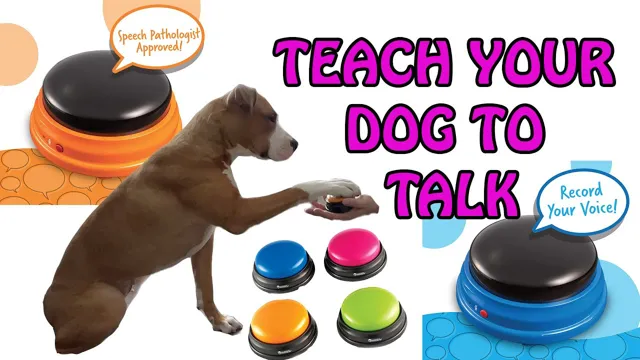The Role of Mental Stimulation in Your Dog’s Wellbeing

As dog owners, we often focus on providing our furry friends with the physical necessities of life – a comfortable place to sleep, a nutritious diet, and regular exercise. But what about their mental well-being? Just like humans, dogs need mental stimulation to stay happy, healthy, and engaged. Without it, they can become bored, anxious, and even destructive.
Mental stimulation is not just about keeping your dog’s mind active, it’s also about strengthening your bond, reducing stress, and preventing behavioral problems. In this post, we’ll delve into the crucial role mental stimulation plays in your dog’s overall well-being, and explore the ways you can provide your dog with the mental exercise they need to thrive.
Why Mental Stimulation is Crucial for Your Dog’s Well-being
A dog’s mind is a complex and dynamic entity, constantly craving stimulation and activity. Just like humans, dogs need mental exercise to stay happy, healthy, and engaged. Without it, they can become bored, restless, and even destructive. Mental stimulation plays a vital role in your dog’s overall well-being, as it helps to reduce stress, anxiety, and depression. It also improves their problem-solving skills, boosts their confidence, and enhances their ability to learn and adapt.
A mentally stimulated dog is more likely to be calm, focused, and well-behaved, making them a joy to be around. On the other hand, a lack of mental stimulation can lead to a range of negative behaviors, including excessive barking, chewing, and digging. By providing your dog with regular mental stimulation, you can help to prevent these problems and create a more harmonious and fulfilling relationship with your furry friend.
Signs of Mental Boredom in Dogs
As a dog owner, it’s heartbreaking to see your furry friend struggling with mental boredom. But, unfortunately, it’s a common issue that can lead to destructive behavior, anxiety, and even depression. So, how do you know if your dog is suffering from mental boredom? One of the most obvious signs is destructive behavior, such as chewing, digging, or barking excessively. A bored dog may also engage in repetitive behaviors, like pacing or spinning, as a way to cope with their lack of mental stimulation.

Another telltale sign is a lack of interest in activities they once enjoyed, such as playing fetch or going for walks. Your dog may also become withdrawn or lethargic, showing little enthusiasm for life. In some cases, mental boredom can even lead to escapism behaviors, such as attempting to escape from the house or yard. If you’re noticing any of these signs in your dog, it’s essential to take action and provide them with the mental stimulation they need to thrive. By recognizing the signs of mental boredom, you can take the first step towards providing your dog with a happier, healthier life.
Ways to Provide Mental Stimulation for Your Dog
Providing mental stimulation for your dog is a crucial aspect of their overall well-being, and the good news is that it can be achieved in a variety of fun and engaging ways. One of the most effective methods is through interactive toys and puzzle games, which challenge your dog’s problem-solving skills and keep them engaged for hours. For example, hiding treats or kibble inside a Kong toy or a Tricky Treat Ball encourages your dog to use their sense of smell and problem-solving abilities to figure out how to get the reward. Another way to provide mental stimulation is through scent work, where your dog is taught to follow specific scents and identify them.
This activity not only exercises your dog’s nose but also provides a sense of accomplishment and satisfaction. You can also try teaching your dog new tricks and commands, such as “shake” or “roll over,” which challenges their cognitive abilities and strengthens your bond with them. Additionally, providing a variety of textures, smells, and sensations through sensory play, such as offering a frozen Kong or a cardboard box to explore, can also help to stimulate your dog’s mind and keep them engaged. By incorporating these activities into your dog’s daily routine, you can help to reduce boredom, anxiety, and destructive behavior, and instead, promote a happy, healthy, and mentally stimulated canine companion.
Benefits of Mental Stimulation for Your Dog’s Health and Behavior
Mental stimulation is a vital component of a dog’s overall well-being, and its benefits extend far beyond just keeping your furry friend entertained. Providing your dog with regular mental stimulation can have a profound impact on their physical and emotional health, as well as their behavior. For one, mental stimulation can help reduce stress and anxiety in dogs, which can lead to destructive behaviors such as chewing, digging, and barking. By engaging your dog’s mind, you can channel their energy into more productive and calming activities, resulting in a more relaxed and peaceful demeanor.

Additionally, mental stimulation can help slow down cognitive decline in older dogs, keeping their minds sharp and active well into their golden years. Furthermore, mental stimulation can also improve your dog’s problem-solving skills, boosting their confidence and independence. Perhaps most importantly, mental stimulation can strengthen the bond between you and your dog, fostering a deeper sense of trust, understanding, and connection. By incorporating mental stimulation into your dog’s daily routine, you can unlock a happier, healthier, and more well-rounded companion.
Mental Stimulation and dog training courses
Mental stimulation is a crucial aspect of your dog’s overall well-being, and one of the most effective ways to provide it is through engaging online dog training course. By enrolling your furry friend in a training program, you’re not only teaching them new skills and tricks, but also challenging their minds and keeping them mentally active.
A well-structured training course can help to reduce boredom, anxiety, and destructive behavior, while also strengthening the bond between you and your dog. Whether it’s agility training, obedience classes, or scent work, mental stimulation exercises can help to improve your dog’s problem-solving skills, memory, and focus. By incorporating mental stimulation into your dog’s daily routine, you’ll be rewarded with a happier, healthier, and more well-rounded companion.
Tips for Incorporating Mental Stimulation into Your Daily Routine
Incorporating mental stimulation into your daily routine with your dog can be a fun and rewarding experience for both of you. One of the easiest ways to do this is to start with simple activities such as hiding treats or toys around the house or yard, encouraging your dog to use their problem-solving skills to find them.
You can also try teaching your dog new tricks or commands, such as “shake” or “roll over”, which will challenge their cognitive abilities and keep them engaged. Another great way to provide mental stimulation is through interactive puzzle toys, which can be filled with treats or kibble, providing a fun and challenging way for your dog to get their reward. Even something as simple as taking a different route on your daily walk can provide mental stimulation, as your dog will be exposed to new sights, smells, and sounds. By incorporating these activities into your daily routine, you can help keep your dog’s mind active and engaged, reducing the risk of boredom, anxiety, and destructive behavior.
Final words
As you gaze into your furry friend’s loving eyes, remember that their mental well-being is just as crucial as their physical health. Providing mental stimulation is not only a key to a happy and healthy dog, but it’s also a vital component of strengthening the bond between you and your loyal companion. By incorporating mentally stimulating activities into your dog’s daily routine, you’ll be rewarded with a more engaged, focused, and contented pet.
So, take the time to challenge your dog’s mind, and watch as they thrive and flourish. With a little creativity and patience, you can unlock your dog’s full potential and create a lifelong friendship that’s truly unforgettable.



